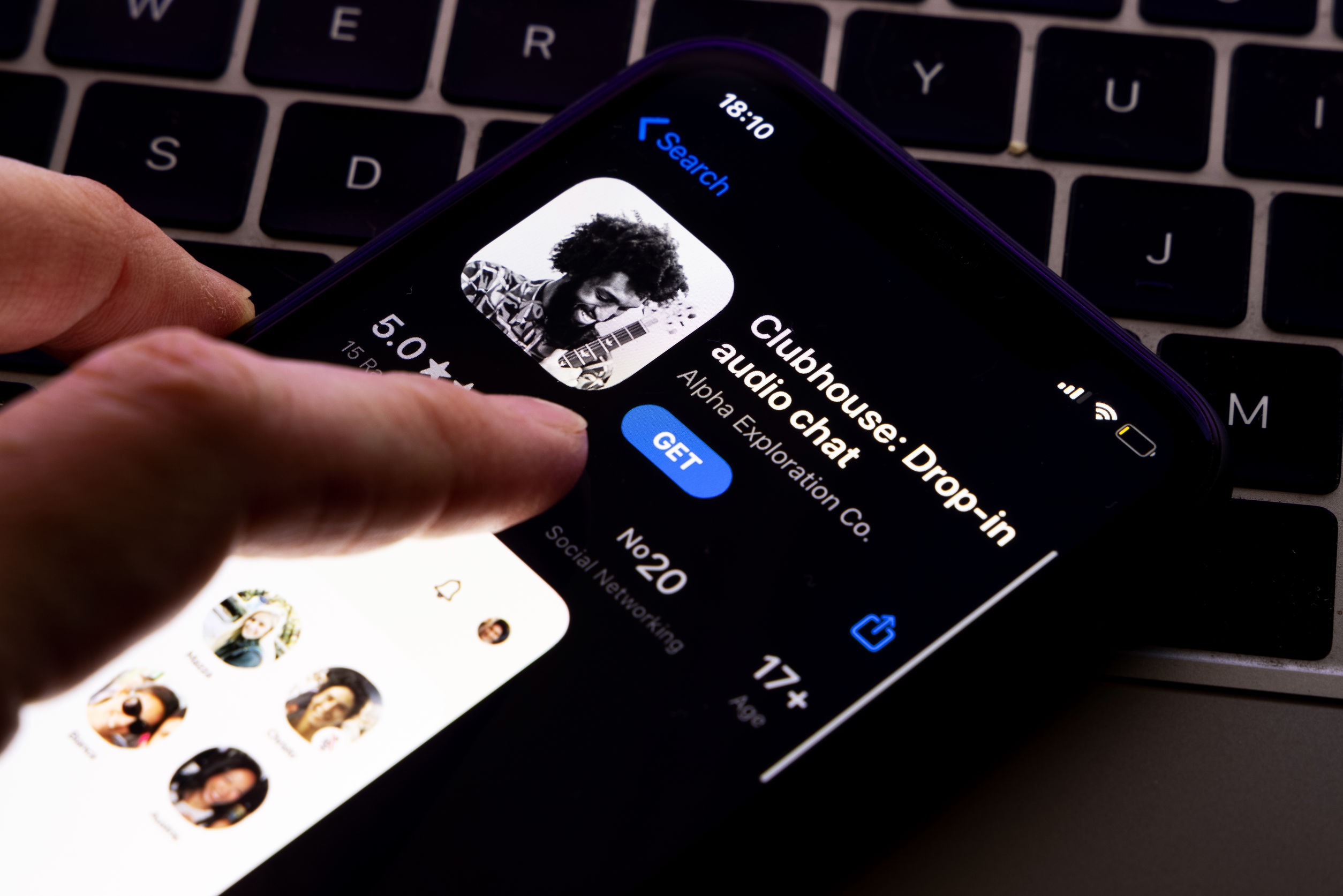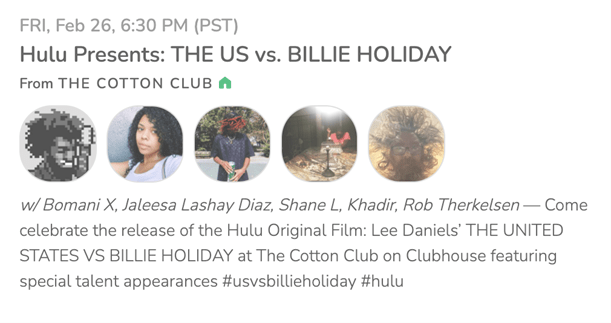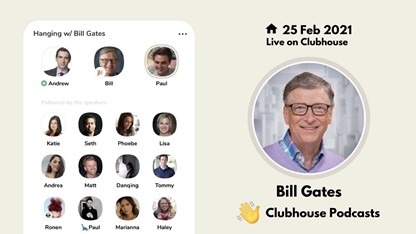The complete Clubhouse guide: 8 steps to tap into social audio
Here’s a roadmap to navigate the social audio craze and tap into the potential of the latest viral social platform.

Clubhouse buzz is at a fevered pitch. With 10 million users and a $1 billion valuation, the app blends networking, panel discussions and live podcasts in an addictive experience.
And it’s not alone. Clubhouse is just one app tapping into the power of social audio, which is being heralded by many as a “Goldilocks Medium”—especially in the pandemic era.
“Text social networks aren’t enough, video conferencing is too much, but social audio is just right,” explains Jeremiah Owyang, a disruptive tech analyst and founder at Kaleido Insights and Catalyst Companies, as well as a former Forrester Research analyst whose Twitter feed was named one of the top feeds by Time Magazine.

Jeremiah Owyang
Here’s his advice for determining if Clubhouse is a fit for you—and for dipping your toes into social audio:
1. Listen and learn. “There are over 33 social audio startups,” Owyang says. “We’re seeing more players emerge now and some are focused on a business audience.”
He points to Mark Cuban’s Fireside, Fishbowl and Twitter Spaces as prime examples.
“Fireside’s reaching out to influencers for top-quality content and is worth watching,” he says. “And Fishbowl is basically LinkedIn for social audio. But the biggest player to watch is Twitter Spaces. It’s going to take over and eat Clubhouse’s lunch.”
Owyang also sees vertical-specific platforms emerging by industry. “Assume that one will emerge in your sector, whether you’re in sports or healthcare or whatever.”
That doesn’t mean you should allocate resources—yet.
“Many big-name brand marketers are sniffing around and getting ready to deploy on Clubhouse,” Owyang says. “But most are just listening in right now. That’s my advice: Listen and learn before jumping in.”
2. Follow big brands, and have fun. Once you find a relevant brand in your space on Clubhouse, follow it. “You’ll see fun ideas to try and mistakes to avoid,” Owyang says. “It’s still early on, so best practices are still getting sorted out.”
So far, sponsoring rooms or influencers is emerging as a first step for many brands. For example, Hulu sponsored a speakeasy room on Clubhouse called The Cotton Club to help build awareness for HBO’s “The United States vs. Billie Holiday” movie.

The Kool-Aid Man’s voice moderating on Clubhouse was one of Owyang’s favorite influencer activations. “They got a lot of cross-promotional play [on Twitter] with his famous “OH YEAH” line,” he says.

3. Get executive comms to lean in. “I’m also seeing executive communications teams take the initiative,” says Owyang. “They’re getting CEOs to pop into Clubhouse and it works.”
Michael Dell, for example, sometimes appears in rooms talking about entrepreneurship.
“It’s not intensive or scripted,” Owyang says. “It’s like having a beer on campus with him. In fact, he recently talked about starting a company in his dorm room.”
CEOs like Bill Gates, Elon Musk, Mark Zuckerberg and Steve Ballmer are engaging more officially. “They’re more like Ted-style keynotes in a formal venue,” says Owyang.

A simpler approach could be to just to extend a virtual conference or townhall by replicating “happy hour” afterward on Clubhouse.
“Communicators should consider earmarking a portion of their telecom budget for this,” Owyang says. “If you have speakers on a stage or are recording a webinar, it won’t cost much more to extend the Q&A into the platform and make it interactive and engaging.”
4. Repurpose, but with caution. Content creators who are recording live podcasts can pull their audiences in for live engagement on the platform. “The idea has the same value proposition as a fireside chat,” says Owyang. “However, you need explicit agreement from all speakers if you’re going to do this.”
While he’s all for repurposing content, Owyang says a recorded Clubhouse session doesn’t necessarily translate to quality podcast content.
“It’ll be less produced on Clubhouse and you never know what will happen,” he warns. “The simile that comes to mind is that it’s like trying to take a Tweet stream and turn that into an article. It’s just not the same medium and requires cutting and editorializing if you’re going to repurpose it effectively. It’s not just a simple cut-and-paste.”
5. Handle the hustle. Clubhouse has received criticism for being a “hotbed of hustle culture.” Some conversations can feel like pitches and you can’t always believe what you’re hearing.
“It’s true,” Owyang says. “People are looking for answers and trying to connect on the platform at a time when they can’t go to live conferences. As a result, some people are taking advantage.”
His advice: “Do your research. Google speakers. You can also type in their first/last names and the word ‘scam,’” he suggests. “You’ll be surprised by what you see.”
Clubhouse has heard the criticism and responded. Today, members can flag others who aren’t adhering to community values using the “shared block list” feature, which helps you identify users who have been blocked by multiple people in your network.
“They’ll be flagged with a shield icon if five people in your network have labeled them as miscreants,” says Owyang.
In other words: caveat emptor.
6. Remember your discipline. Clubhouse isn’t for everybody. Here are some quick steps and “marketing hygiene” reminders to help you see past the hype—and whether you should engage:
- Conduct classic market research. “Identity if your market is even there,” says Owyang. “If your customers aren’t and you cater to the Android—then don’t do it.” (The app remains only available to Apple users). Similarly, see if the topics being discussed are relevant to your brand. Simply search by keywords in profiles or topics/rooms.
- Monitor customers/prospects. “If they’re in Clubhouse, then listen and see what’s being said. Get a lay of the land and sentiment,” says Owyang. “Begin to identity the influencers and what the competitive environment looks like.”
- Determine your business goal. “As with any comms strategy, ask yourself what you want out of the engagement,” says Owyang. Examples include:
- Collect intel.
- Influence market.
- Enhance customer care.
- Build a following.
- Settle on tactics. “Once you have your goal, it’s easy to figure out how to execute on it,” says Owyang. “If you want to influence the market, then send execs in to talk. If you want to quickly build a following, then sponsor influencers who are already there and engaging audiences.”
7. Grow your “audio” skillset. “Social audio will creep into everything you touch,” says Owyang. “Facebook Messenger is allegedly incorporating social audio features—and they’ll even be embedded on websites, blogs and press releases.”
What does this mean to you?
“The skillset for communicators is changing right before us,” he says. For example:
- Can you enable two-way dialog?
- Can you speak on the fly?
- Is your voice warm and tone approachable?
- Can you have authentic conversations about issues like race and business?
“It’s not like speaking to the press and hitting all your message points,” Owyang says. “It’s more like speaking with IR analysts who will talk back.”
Similarly, social media mangers may have the skills to create amazing posts. But can they hang in a conversation that jumps from small talk to hot button issues? Owyang says the skills gap might be too much to bridge. If so, get creative and tap someone outside of the team to take the mic.
“It might not even be someone in comms,” he says. “Maybe it’s an account manager or the person talking to customers at a coffee shop. Whoever it is, they need to be able to talk authentically and have heart-first conversations.”
8. Avoid the biggest mistake—waiting. Owyang thinks brands aren’t making too many mistakes on Clubhouse right now—other than not jumping in.
“You risk missing the chance to carve out a space and establish yourself as an authority on the platform if you don’t act soon,” he says.
His advice: “Move in fast if you’re adventurous. Take a small part of your budget and bring in your team. Try it for six months as part of your emerging media plan.”
Brian Pittman is the Dean of Ragan Training and Ragan Communications event producer. Jeremiah Owyang is a disruptive tech analyst and founder at Kaleido Insights and Catalyst Companies. He blogged recently about “20 Ways Business Will Engage Social Audio.”
Discover more new social media strategies and insights at Ragan’s May 20 “Social Media for Communicators Workshop” (with speakers from ADA, Microsoft, Fox Entertainment, Freddie Mac, Explore Georgia, Broward MPO, Big Sky Agency and more).







